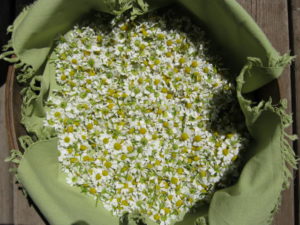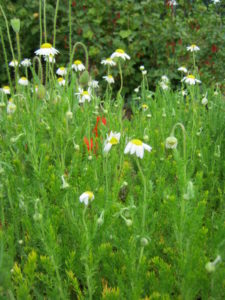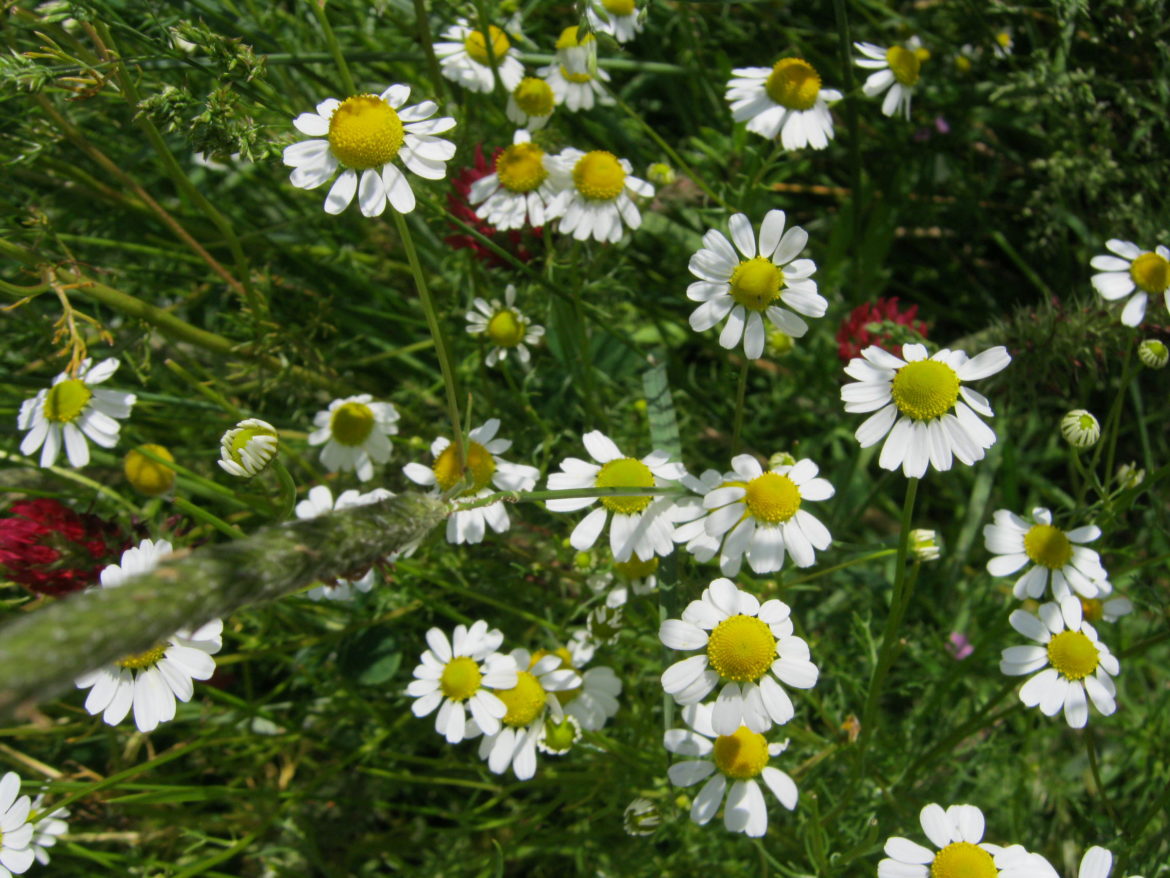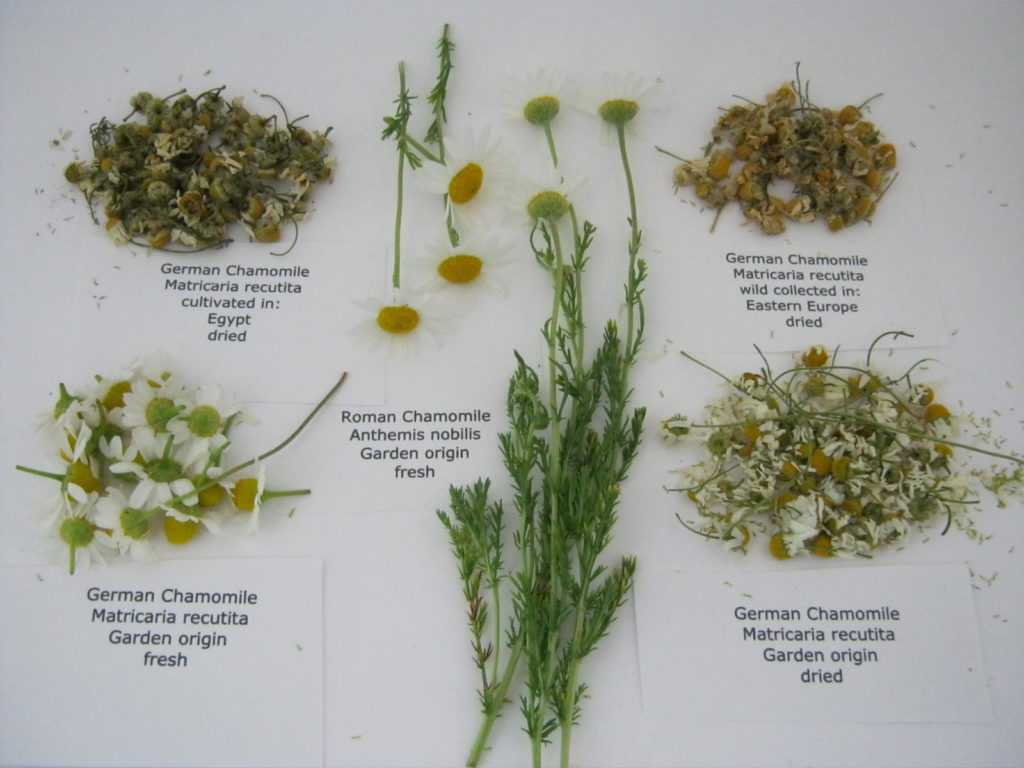
Matricaria recutita is known by the common name of German or True Chamomile, a late spring/early summer flowering Annual plant. This is the Chamomile which is used as a tea herb in form of tea bags, loose tea, and tea mixtures. Most commercial sources come from cultivation in Egypt, or are wild harvested in Eastern Europe; both are offered with organic certification. This cool season plant likes to grow wild in fields of the Northern Hemisphere, but can also be cultivated. The best variety is ‘Bodegold’. It has large flowers, which are high in volatile oil content, and a sturdy, upright growing habit.
Chamomile’s many medicinal properties are the reason why this herb has been widely used over history. Applied topically it is an anti-inflammatory and aids wound healing. Drunk as a tea it soothes the digestive, as well as the nervous system. We drink Chamomile tea for an upset tummy due to gastrointestinal imbalances, it helps us relax from a long day and prepares us for sleep, and it offers a motherly cloak of comfort for those suffering from menstrual cramps (The name Matricaria comes from the Latin word for womb: Matrix).
Chamomile tea is high in volatile oils, and hence the herb should not steep longer than 5-10 minutes. Steeped to long, the taste turns bitter, and consumption may become irritating to the system.
 There is also Roman Chamomile, which starts flowering at the end of the German Chamomile flowering season. The botanical name for Roman Chamomile is Anthemis (Greek word for Chamomile) nobilis (notable, excellent, renowned), and this plant is a low growing, mat-forming Perennial.
There is also Roman Chamomile, which starts flowering at the end of the German Chamomile flowering season. The botanical name for Roman Chamomile is Anthemis (Greek word for Chamomile) nobilis (notable, excellent, renowned), and this plant is a low growing, mat-forming Perennial.
Roman Chamomile is too strong for a tea herb, it is instead used externally in forms of washes, hydrosols or as an ingredient of body-care products for it’s skin soothing properties.The incredibly sweet and apple-scented aroma makes Roman Chamomile essential oil a necessity in any aromatherapist’s repertoire.
Chamomile is a host for many insects, on the fresh as well as the dried plant. After I collect my Chamomile flowers, I let them sit on a screen for a few hours, to give these insects a chance of escaping.
After drying I store my home grown Chamomile in a closed paper bag. Storage of the freshly dried material in a glass jar or plastic bag will speed up the formation of mold, because the herb continues to exude moisture even when it appears to be dry.
If you notice insect activity developing in your dry Chamomile flowers, you can place the material into the freezer for 10 days.
Grow your own Chamomile by starting seeds in fall (if you are in a climate with mild winters) or very early spring (if you life in a cold climate, with prolonged sub freezing temperatures) in a pot in a greenhouse. Transplant outside once the seedlings have develop into plants.
Chamomile is a member of the Compositae family, which encompasses an enormous amount of daisy like flowers. The fact that the botanical name for both German and Roman Chamomile (and many other Compositae family members) has been changed repeatedly indicates that these daisy flowers are all similar, but yet still different. It is very easy to collect the wrong species when wild collecting in a field, so use only material from your own seed grown plants, or purchased at a store.
John Scheeper’s Kitchengarden seeds offers Bodegold German Chamomile seeds.


Leave a Reply